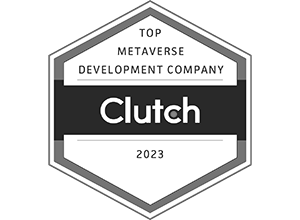If you’re a frequent user of mobile apps or social media, there is a good chance that you have encountered playable ads. This new phenomenon is truly shaking up the marketing industry with over 70% of advertisers deeming the practice effective in a recent survey. Let’s take a closer look at what playable ads are and what makes them so successful.
What are Playable Ads?

As the name suggests, a playable ad is an advertisement with playable mechanics; essentially a mini-game meant to attract users to a game, service, or product. Playable ads for brands have been actively used since at least 2016, and are mainly used to market games, because many countries have laws prohibiting misleading ads.
These “playables” are interspersed in other content, such as games, videos, and even websites, aiming to catch the user’s attention and intrigue them so much that they will want to try the application being advertised. Essentially, they are provided with a small taste of the full game, with one or two interactive options and accompanying animations.
Where to Use Playables
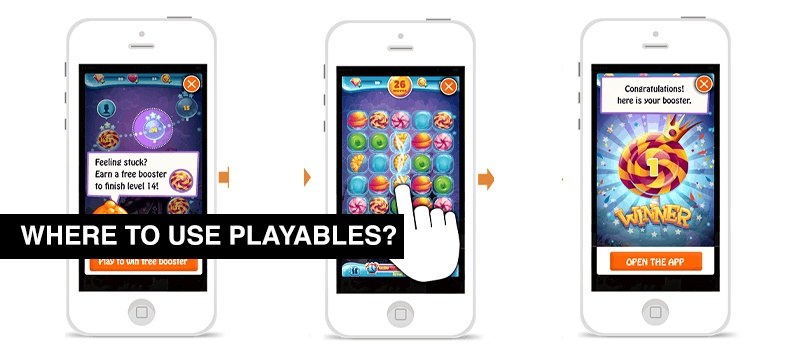
If you are thinking about making a playable to promote your game, you have multiple options for deploying it – different platforms that can bring in entirely different audiences. They include:
Mobile apps and games
Unless you make an arrangement with another app owner to advertise your game in their app, you will need to go through the usual channels of the iOS/Android ecosystems. Mainly, you will need to work with an ad network to distribute your campaign to target audiences. Adwords playable ads held the crown among ad networks for a long time, but are now known as Google Ads and faces stiff competition from other services like App Annie and Applovin.
Web playables
Though mobile is undoubtedly the platform of choice for playables, websites are where they first appeared. The great thing about marketing on the web is that you can find dozens of websites that are popular with your target audience and choose to promote your app there. This platform is also more commonly used by adults, so you can have an easier time reaching them.
Facebook and Snapchat
These 2 social media networks are incredibly popular among advertisers for several reasons. First of all, they have billions of active users, at least true for Facebook playable ads (2.8 billion users). Secondly, they are mostly used for entertainment, so users are much more inclined to play a game or get distracted with an app than they would be looking for information on the web. Finally, FB and Snapchat playable ads have robust advertising features and solutions that make it very easy for companies and brands to begin promoting their creations.
Why Use Playable Ads?

Compared to other marketing and promotion strategies, playables offer a range of benefits to users and advertisers. Some of them include:
1. Users get to try before committing to a download
Most smartphone users have dozens of apps installed on their devices and often face concerns over memory/storage management. With this in mind, many are hesitant to install new apps without experiencing them first and determining that it is worth it. Playables solve this issue by giving a nice little preview of what players can expect, so many users with doubts can be won over this way.
2. Better user retention
Just as we have noted that playables better appeal to a select group of users, they also do a great job of filtering out those who would not stick around anyway. Those people who see and try the demo and are left with a negative impression simply won’t download the app, so most of the people that download will be more engaged and will stick with the game longer. In the end, the game developer will have a much more engaged and reliable user base.
3. A wonderful first impression
Some apps fail to keep their users simply because they have too much of a learning curve, and first-time users feel lost in the gameplay. Playables can alleviate this problem by providing a very simple version of mechanics used in the full version. Not to mention, simplicity tends to draw in a bigger crowd than complex-looking experiences. Users master this simple version in a matter of seconds, and are much better prepared for more elaborate tasks after they download the full software. They go into the experience with a positive outlook and relevant knowledge.
4. Obtaining additional analytics
We have mentioned benefits for the publisher like drawing in more players and boosting engagement, but this is hardly the limit. Game development studios can gather analytics from the mini-games, based on the choices of interactive options users make and what their actions are after experiencing the advertisement. This data can help them find the right balance of humor, action, mystery, and other factors that will influence the development of their next playable.
Types of Playable Ads
While all playables adhere to the simple formula of giving the user a miniature game experience with a call to action (e.g. download the game), they can be classified according to their design and presentation:
1) Fullscreen/Banner
Full-screen ads are abundant in mobile applications, appearing in the lull periods of gameplay. Though they are intrusive and sometimes jarring, users have the option to stop/close the ad after a few seconds. In contrast, playables on banners can appear on all platforms, though they are not as common on smartphones given their limited screen size. Banner ads take up only a fraction of the screen and appear in sidebars or separate tabs/windows.
2) Passive/Urgent
Many playables are closely tied to the concept of limited time, so they make it a priority to attract users at any cost. For example, the “Stewie the Lucky” as presented below features a ticking sound, as well as limited time for the user to make a choice in interactive options to avert disaster. In comparison, passive advertisements will run on their own. Typically, they will still have a hook (some feature enticing the user), but will still provide some entertainment even if the user does not interact with the application.
3) Cached/Live
This one is a bit technical. As a general rule, advertisements do not come preinstalled with apps that they play on. If it were the case, we would be seeing the same commercials on individual apps. Instead, playables are downloaded from the internet, though the manner in which this happens varies. Most of the time, a live internet connection is required to engage the user at the perfect time and track their interactions in real-time. However, some campaigns download long before they activate, and can be launched even when the user has no active internet connection. These are known as cached ads.
Top Tips for Creating an Effective Playable Ad
If you’re new to the process of using this marketing approach, it is best to take notes from companies with plenty of experience and success in this field. We have compiled some of our playable ads best practices based on internal and external experience. We hope they prove helpful to your endeavor.
Keep it short and sweet
The main objective of your advertisement is to instantly hook users and convert them into app users. Thus, it will not do good to make the experience long or complex – just give them a bite-sized experience in under a minute.
Use an effective call to action
After experiencing your mini-game, most users will not be aware that you have a full app to show them, so it is important to let them know through your call to action. Usually, this is a short message about continuing gameplay and a button with a link to the app attached.
Keep some features hidden
Though you may want to show off all the top features of your game off-the-bat, we recommend sticking to the principle of “less is more”. If you give users a small taste of what is to come, it will add some intrigue, and make them more motivated to try your game.
Apply an easy difficulty
With an easy difficulty, people will not need to put much thought or interaction into your playable. It will draw in all age groups, and serve as a small distraction that people can do in parallel to other everyday tasks. Don’t take this as a universal tip, though, since some ads are effective by intentionally frustrating the player, thus motivating him to continue his efforts in the full version.
Add a pleasant reward
It has been scientifically proven that in-game achievements and rewards make us feel good inside, and the game doesn’t even have to be long and difficult. You can take advantage of this pattern by adding a nice reward message/animations upon the user’s success in the mini-game.
Use exciting words for emotion
People often underestimate the power of words. Sure, you can add plenty of humor, excitement, and dazzle to your playable, but the impression that it casts on users will be even stronger if you use expressive words. For example, instead of saying “Save the princess from the monster”, you can say “Rescue the princess from the foul beast”.
How to Create Playable Ads

Want to know more about playable ad created by Game-Ace?
Most playable ads are made with a combination of HTML5 and Javascript, so you will need specialists in this field to handle development. However, there is another alternative – you can also partner with a playable ads developer company with the experience and staff to handle such projects. For example, the Game-Ace studio provides such services to business, and our development process goes like this:
1. Choosing a content source
We have two different approaches towards creating playables, and this decision impacts the next stages. These approaches are: 1) Miniature – we take the existing game source code and shrink it down to something small and simple that can fit into an add with minimal functionality ; 2) New creation – we create new features, art, and game play, using the original game only as an inspiration.
2. Business analysis and estimation
Our team of business development experts can help you pick a cogent strategy for your ad, having analyzed other ads in this niche and consulted with you on what business goals it should achieve (e.g. how exactly you want to hook new players, which emotions to evoke, targeted age group, etc.). This information will be crucial for the creation of an estimation and scenario for the playable.
3. Obtaining art and references
This step can be bypassed if we are using the “miniature” approach and reusing the art and code of an existing game, but otherwise, our art team gets to work. They create concept art for the characters and elements of the ad, which are followed by complete designs and animation. The primary tools used in this stage are Spine, Adobe Illustrator, and Maya (for 3D art/animation).
4. Development
This stage is quite straightforward. Our developers use Unity (or another engine if required) to create the ad experience, either reusing and reworking old code (from the existing game) or scripting new code. All of it is packaged and reviewed until the desired level of quality has been reached.
5. Deployment and integrations
Once the playable has been created, we send it to the client and it may be the finish line. Alternatively, we can also assist with integrating various analytic services in the ad, such as those offered by Unity, Facebook, Google, Apps Flier, and Game Analytics.
Want to build your playable and get it out there quickly? Game-Ace would love to help! We have decades of experience in building games and game-related content, and are always looking for new and exciting projects. To get in touch and talk details, just send us a message.
 The Quest for Excellence: Unveiling the Best Gaming Platforms of Today
The Quest for Excellence: Unveiling the Best Gaming Platforms of Today 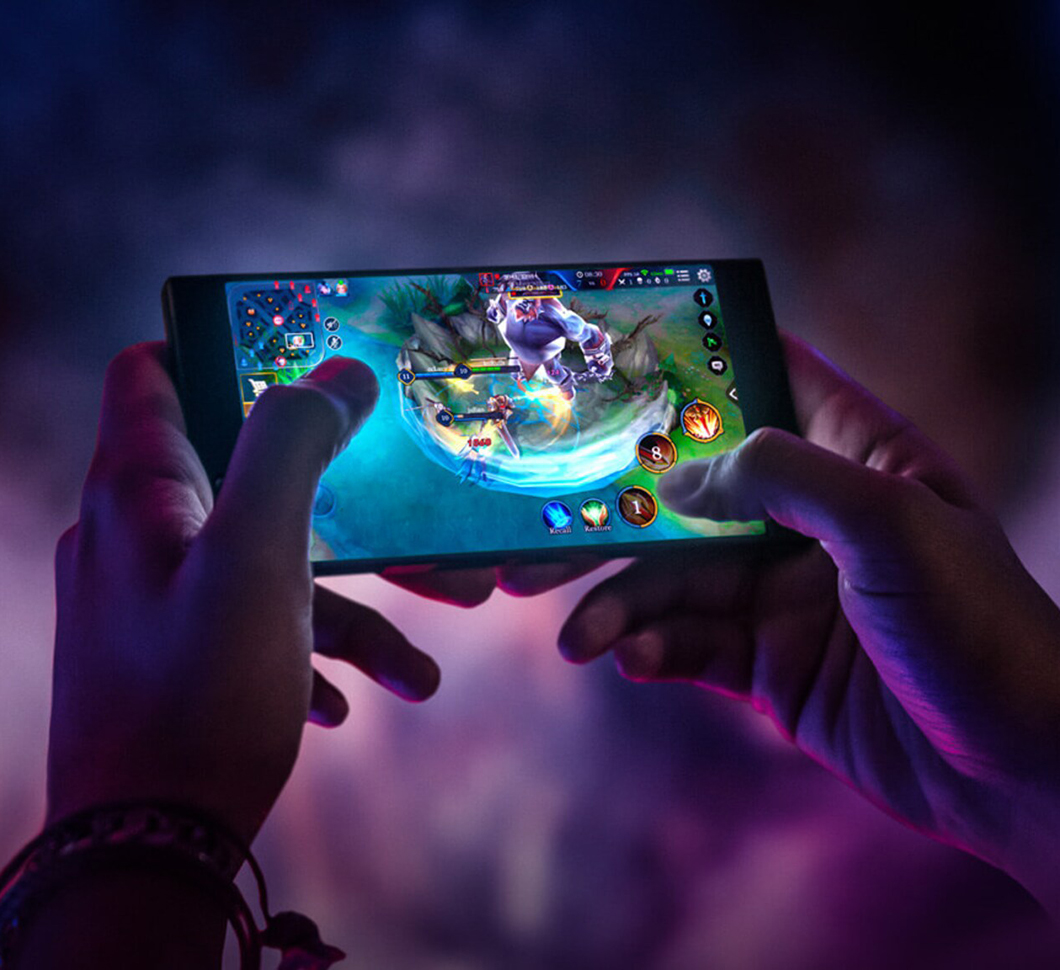 Mobile Gaming Trends 2024: Genres, Technologies, Demographics
Mobile Gaming Trends 2024: Genres, Technologies, Demographics  How to Make a Mobile Game in Unity 2024
How to Make a Mobile Game in Unity 2024 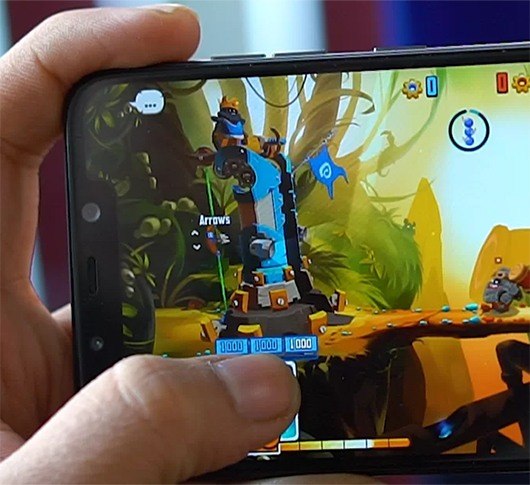 Mobile Game Testing: Types, Tools, and More
Mobile Game Testing: Types, Tools, and More 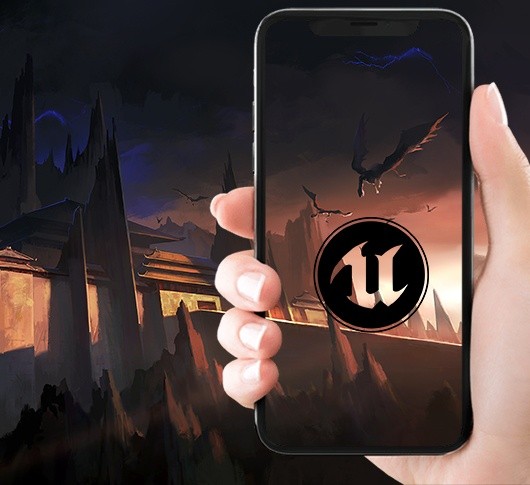 Choosing Unreal Engine for Android Game Development: What to Expect
Choosing Unreal Engine for Android Game Development: What to Expect 


